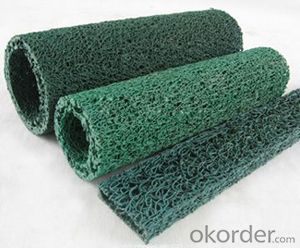- Understanding the Role of Geomembrane Liners in Waste Management
- Innovations in Geomembrane Liners for Water Management
- Geomembrane Liners: A Comprehensive Guide
- The Future of Geomembrane Liners in Civil Engineering
- Geomembrane Liners: Enhancing Landfill Stability
Manager:
WhatsApp:+86 177 0135 2670
Tel:+86 177 0135 2670
Email:marketing@okorder.com
Address:3rd Floor, No.2 Building, No.1 Sanlihe Road
HDPE Geomembranes: The Ideal Material for Ponds in Roof Waterproofing Ponds
Ponds have always been a source of fascination and tranquility for many people. They are not only aesthetically pleasing but also serve various functional purposes. However, when it comes to constructing ponds, especially on rooftops, the choice of material is crucial. One material that has proven to be highly effective is High-Density Polyethylene (HDPE) geomembranes. In this article, we will explore why hdpe Geomembranes are the ideal choice for pond construction in roof waterproofing applications.

The Versatility of HDPE Geomembranes
HDPE geomembranes are known for their versatility. They can be used in a wide range of applications, from water management to environmental protection. In the context of rooftop ponds, HDPE offers a unique combination of properties that make it an excellent choice. Let's dive into some of these properties and understand why they are beneficial for pond construction.
Durability and Longevity
One of the primary concerns when constructing a pond on a rooftop is the durability of the material. Rooftop environments can be harsh, with exposure to sunlight, wind, and temperature fluctuations. HDPE geomembranes are designed to withstand these conditions. They are resistant to UV radiation, oxidation, and abrasion, ensuring a long service life for your pond.
Chemical Resistance
Ponds often contain chemicals such as chlorine and algaecides, which are used to maintain water quality. HDPE geomembranes are highly resistant to a wide range of chemicals, ensuring that the material will not degrade or be compromised over time. This resistance is particularly important in rooftop ponds, where the containment of these chemicals is crucial to prevent damage to the building structure.
Flexibility and Adaptability
Rooftop ponds need to be flexible and adaptable to the underlying structure. HDPE geomembranes can be easily molded to fit the contours of the roof, ensuring a perfect seal and preventing water leakage. This adaptability is a significant advantage over more rigid materials, which may require additional modifications to the roof structure.
Environmentally Friendly
In today's world, environmental considerations are paramount. HDPE geomembranes are made from recyclable materials, making them an eco-friendly choice. They do not contain any toxic substances that could harm the environment or aquatic life within the pond.
Cost-Effectiveness
While it may seem counterintuitive, HDPE geomembranes are cost-effective in the long run. They require minimal maintenance and have a long lifespan, reducing the need for replacements and repairs. This translates to savings for the pond owner over time.
Installation and Maintenance
The process of installing HDPE geomembranes is relatively straightforward. They can be easily cut and shaped to fit the specific requirements of the pond. The seams are heat-welded, creating a secure and watertight seal. This method of installation ensures that the pond remains leak-free and maintains its integrity over time.
Maintenance of HDPE geomembranes is also quite simple. Regular inspections are recommended to check for any signs of wear or damage. However, due to their durability, these inspections may not be needed as frequently as with other materials.
Real-World Applications and Benefits
There are numerous real-world examples of rooftop ponds constructed with HDPE geomembranes. These ponds not only serve as beautiful additions to the buildings they are a part of but also provide functional benefits such as stormwater management, heat insulation, and even as habitats for wildlife.
Stormwater Management
Rooftop ponds can play a vital role in managing stormwater runoff. By capturing and storing rainwater, these ponds help reduce the load on municipal drainage systems, preventing flooding and water pollution.
Heat Insulation
The presence of water in a pond can also provide natural insulation for the building. The thermal mass of the water helps regulate temperatures, reducing the need for artificial heating or cooling systems.
Wildlife Habitats
Rooftop ponds can serve as habitats for various species of birds, insects, and aquatic plants. They contribute to the biodiversity of urban environments and provide a sanctuary for wildlife in areas where green spaces may be limited.
Conclusion
In conclusion, HDPE geomembranes offer a range of benefits that make them the ideal material for constructing ponds in roof waterproofing applications. Their durability, chemical resistance, flexibility, environmental friendliness, and cost-effectiveness make them a superior choice over traditional materials. By understanding and leveraging these properties, homeowners and architects can create beautiful, functional, and sustainable rooftop ponds that enhance both the aesthetics and functionality of their buildings.
- Previous:HDPE Geomembranes: The Choice for Ponds in Aquatic Environment Ponds
- Next:HDPE Geomembranes: The Essential Component for Ponds in Soil Erosion Ponds






